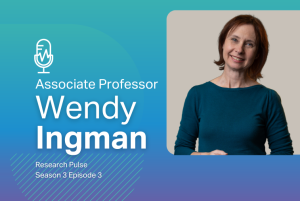A study from The Queen Elizabeth Hospital (TQEH) shows that while some women have knowledge of breast density, older women and those who don’t speak English at home are less likely to be aware of it.
Furthermore, misconceptions are common. For example, while many women believe breast density can be determined by touch, in reality it can only be detected via breast imaging.
“Breast density refers to the appearance of the breast on an X-ray mammogram – the whiter the breasts appear on a mammogram, the denser they are,” says Associate Professor Wendy Ingman, study author and research lead at the Breast Biology and Cancer Unit at the Basil Hetzel Institute for Translational Health Research at TQEH.
“Breast density impacts upon both breast cancer risk and the early detection of breast cancer on a mammogram.”
“Our data support continuing to raise awareness and promoting education about breast density for women.”
Breast density is unrelated to breast size
A/Prof Ingman’s study identified several factors associated with knowledge about breast density in women.
Women who had some knowledge about breast density were more likely to be of younger age, speak English at home, have prior awareness of the term ‘breast density’ and been previously notified of their own breast density.
But many women were not aware that high breast density is a risk factor for breast cancer, and that breast density is unrelated to breast size.
More than 80% of women expressed interest in knowing their own breast density.
Data in this study was collected by questionnaire in consenting women attending the outpatient department of the Breast/Endocrine Surgical unit of The Queen Elizabeth Hospital between March 2022 and July 2023. The study was completed just prior to the introduction of breast density notification policy by BreastScreen SA.
BreastScreen SA reporting on breast density for all clients was introduced in August 2023, following a successful 6-month research study involving clinics at Arndale, Hyde Park and a Mobile Screening Unit visiting outer metropolitan Adelaide. Women receive this information in their screening results letter, and further information is also available on the BreastScreen SA website.
BreastScreen SA was not involved in A/Prof Ingman’s study.
What are breasts made of?
Breasts are made up of different types of tissue.
“Breasts have glands and ducts, which is the tissue that makes and drains milk when a woman is breastfeeding,” says A/Prof Ingman.
“Surrounding and supporting the breast glands and ducts is fibrous tissue, as well as fatty tissue.”
It’s the glands, ducts and fibrous tissue that contribute to breast density, and appear as white areas on a breast mammogram.
“We don’t know why breast density varies so much across the population of women, but we do know it’s affected by genes as well as environmental factors present at the time breasts develop during puberty,” says A/Prof Ingman.
Breast density does tend to gradually decline as a woman ages. Pregnancy and breastfeeding can also reduce breast density in the long term.
Building knowledge about breast density
A/Prof Ingman began to research breast density in 2006.
“It was difficult to study at first, because density relates to a two-dimensional mammogram image, and we didn’t have any methods for being able to go inside the image and study the cells,” she says.
“Together with collaborators across Australia, we did the first studies on the biology of breast density using image-guided biopsies, where we could study high and low density regions of breasts from the same patient.”
“This was then supported by other laboratory studies to develop our understanding of how breast density develops and why it is associated with an increased risk of cancer.”
From 2016 A/Prof Ingman became interested in the clinical and policy issues with breast density notification after attending a conference and hearing about the patient perspective.
She started the InforMD alliance as a way for the public to stay informed about breast density.
Read the research
A/Prof Ingman’s paper Factors Associated with Increased Knowledge about Breast Density in South Australian Women Undergoing Breast Cancer Screening is freely available for the public to read via the journal Cancers (Basel).
The research is a collaborative project across TQEH, Adelaide Medical School, the University of Adelaide and University of New South Wales.
A/Prof Ingman’s research is supported by the National Health and Medical Research Council, National Breast Cancer Foundation, and The Hospital Research Foundation. A PhD scholarship for this research was awarded to Dr Avisak Bhattacharjee from The Hospital Research Foundation.



